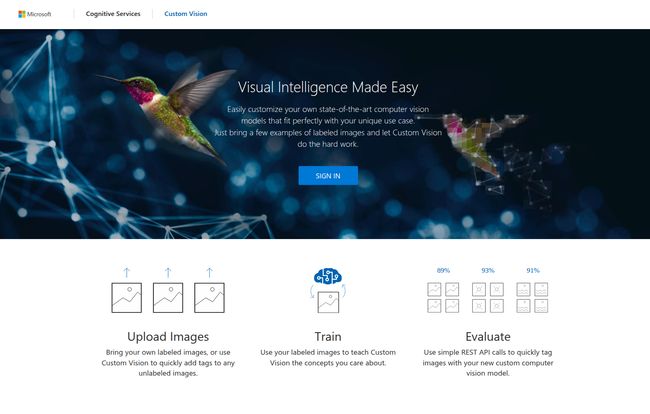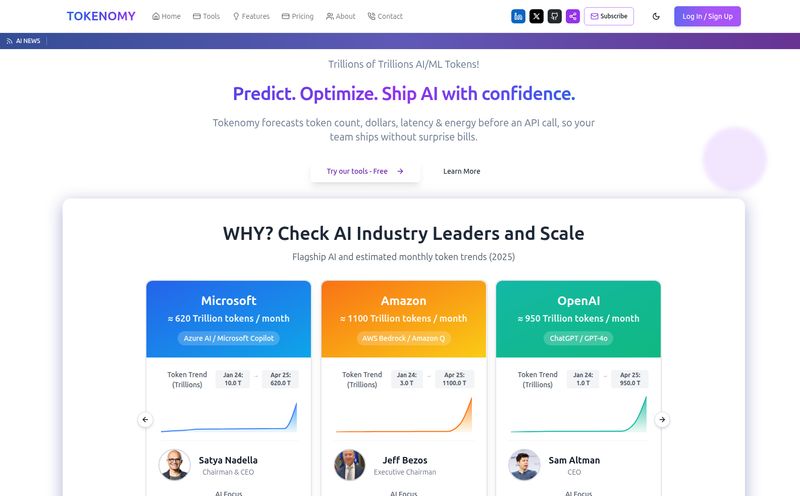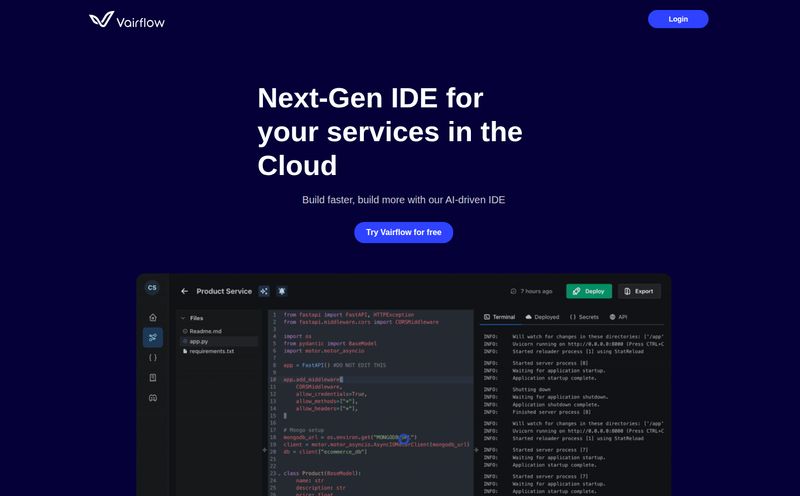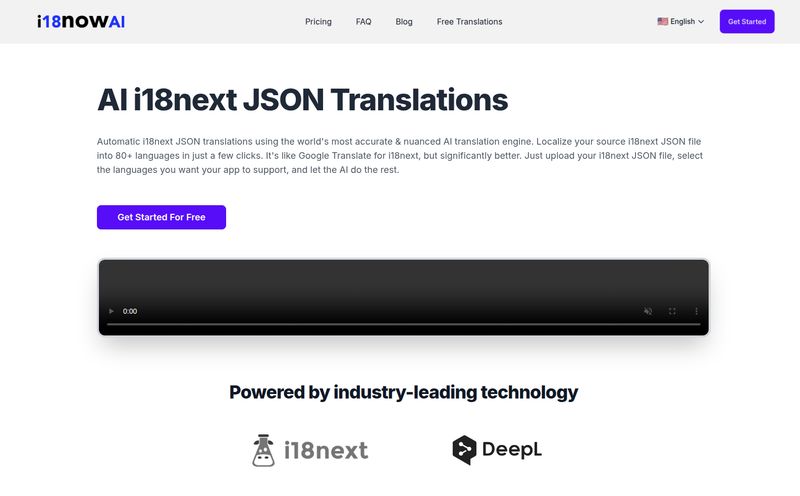As an SEO and traffic guy, I've seen my fair share of AI tools. Most of them promise the world but end up being about as useful as a screen door on a submarine. They're either too generic, too complicated, or require a secret handshake with a data scientist to get anything done. We’ve all been there, plugging an image into a standard API and having it confidently label a picture of our prized corgi as a “cat,” “fox,” or, my personal favorite, a “baked potato.”
It's frustrating. The standard models are trained on everything, so they're masters of nothing specific. But what if you need an AI that knows the difference between a Cardigan Welsh Corgi and a Pembroke Welsh Corgi? Or one that can spot defective widgets on your assembly line?
That's where I stumbled upon Microsoft Custom Vision. And honestly? I'm pretty impressed. It feels like Microsoft finally decided to hand the car keys over to the rest of us. It’s part of their larger Cognitive Services suite, and its promise is simple: Visual Intelligence Made Easy. Big words, but from what I’ve seen, they might actually pull it off.

Visit Custom Vision
So, What is This Custom Vision Thing Anyway?
Imagine trying to teach a toddler what a “car” is. You don't just show them one picture of a sedan. You show them a truck, a sports car, a minivan, an old beat-up station wagon. You point and say “car, car, car.” Over time, their little brain builds a model. They start recognizing patterns—wheels, doors, windows—and can eventually spot a car they've never seen before.
Microsoft Custom Vision is basically that toddler, but supercharged. It's a platform that lets you build your own private, specialized image recognition AI. You don't feed it a billion images from across the internet. You feed it your images. The ones that matter to you. You teach it the concepts you care about, and it learns to see the world through your eyes, not through the generic lens of Big Tech.
The Three-Step Dance: How It Actually Works
The whole process is refreshingly straightforward. Microsoft boils it down to three steps: Upload, Train, and Evaluate. No command lines, no complex algorithms to tweak (unless you want to). It’s designed for humans.
Step 1: Feeding the Machine (Your Images)
This is the most important part, and it's where you do most of the work. You need to gather images and label them. This is the classic “garbage in, garbage out” scenario. If you want your AI to identify different types of coffee beans, you better give it clear, well-labeled pictures of Arabica, Robusta, and Liberica beans. The platform lets you upload your images and then draw boxes around objects or apply tags to whole images. It’s a bit tedious, I wont lie, but it’s crucial. You're the teacher here, and your labeled images are the textbook.
Step 2: The Training Montage
Once your images are uploaded and tagged, you hit the “Train” button. And then… you wait. This is the part where Custom Vision goes to work, running all the complex machine learning stuff in the background. It analyzes your images, looks for the patterns you’ve tagged, and builds a statistical model. It feels like a movie training montage—you just see the progress bar, but in the background, your AI is doing pushups and learning fast. For most projects, this only takes a few minutes, not hours or days.
Step 3: The Big Reveal and The API
After the training is done, you get a report card. Custom Vision shows you performance metrics like Precision and Recall, giving you a good idea of how well your model learned its lesson. You can test it right there with new images to see if it gets things right.
But here's the best part for all the developers and builders out there: it gives you a simple REST API endpoint. This means you can easily plug your custom-trained model into your own app, website, or workflow. You just send an image to the API, and it sends you back the tags. Simple, clean, and incredibly powerful.
The Things I Genuinely Like About Custom Vision
What really gets me excited is the democratization of it all. You no longer need a team of AI experts from MIT to build a custom image recognition tool. If you run an online store for vintage T-shirts, you can train a model to automatically tag shirts by brand, decade, or even collar type. If you’re a botanist, you can build a model to identify rare flowers on a hike. The applications are pretty much endless.
I’ve always felt the true power of technology is when it becomes accessible. This is it. The interface is clean, the process is logical, and the API integration means it's not just a toy—it's a real tool you can build a business on. It's a bridge between a great idea and a functional product.
Let’s Be Honest, It’s Not All Sunshine and Rainbows
No tool is perfect, right? The biggest hurdle, as I mentioned, is the data. You need your own labeled images. And getting a good, diverse set of a few hundred (or thousand) images can be a significant undertaking. This is the sweat equity you have to put in. The model is only as good as the data you feed it.
And then there's the pricing. Or... the lack thereof. I did my due diligence, clicked on their pricing link, and was greeted with a beautiful, bright red...
"Server Error in '/' Application. The resource cannot be found."
Yep, a 404. Classic. While this is probably just a temporary glitch, it makes giving a full cost-benefit analysis a bit tricky. Based on other Azure Cognitive Services, I'd bet my last dollar it's a pay-as-you-go model with a generous free tier for getting started. You likely pay per training hour and per API call. For now, you’ll have to check the main Azure Cognitive Services pricing page and do some digging.
FAQs About Microsoft Custom Vision
Do I need to be a coder to use Custom Vision?
Not to build and train a model! The web interface is all drag-and-drop and point-and-click. You only need coding skills if you want to integrate your trained model into another application using the REST API.
How many images do I need to start?
Microsoft recommends at least 30 images per tag for a decent starting point, but I'd say 50-100 is a better minimum for anything serious. The more, the merrier—and the more accurate your model will be.
Can it identify specific people?
Technically, yes, but you should be very careful here. Facial recognition is a thorny issue with major privacy and ethical implications. Microsoft itself has a whole set of Responsible AI principles. I'd advise against using it for this unless you have explicit consent and a very clear, ethical use case.
Is there a free trial or free tier?
Almost certainly, yes. Most Azure services have a free tier that lets you experiment without spending money. Given the broken pricing page, I can't confirm the exact limits, but you should be able to build and test a few models without getting your credit card out.
The Final Verdict
So, is Microsoft Custom Vision worth your time? Absolutely. Despite the mysterious pricing page and the upfront work of labeling images, it's an incredibly powerful and accessible tool. It puts the power of custom AI into the hands of creators, developers, small businesses, and hobbyists. It's a fantastic step toward making artificial intelligence less, well, artificial, and more of a practical assistant that understands your specific world.
If you have a unique image recognition problem to solve, give it a shot. It might just be the tool you didn't know you needed. Go teach it to spot those corgis correctly for me.



